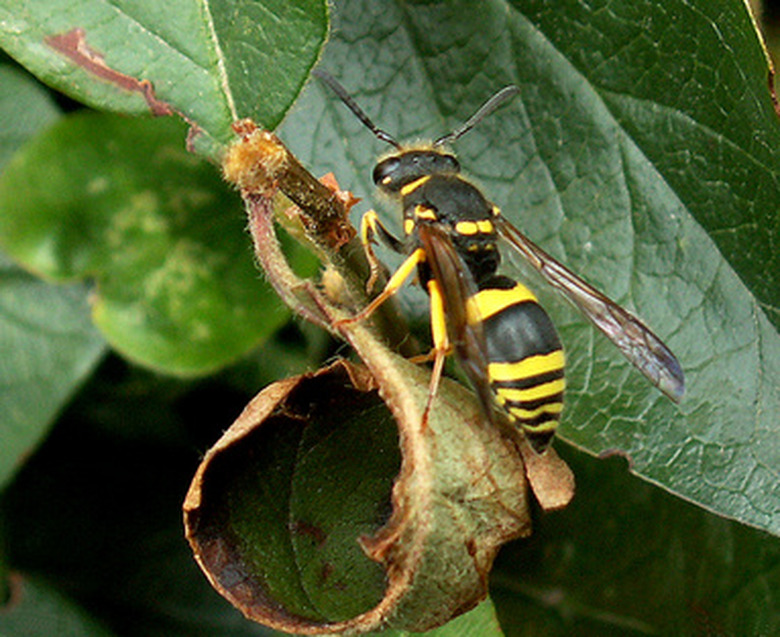Is Wasp Spray Safe For Plants?
Wasp spray generally contains pyrethrin or pyrethroids as the active ingredient. Pyrethrin is an insecticide derived from chrysanthemum flowers, while pyrethroids are man-made chemicals that are molecularly similar to pyrethrin, but often more toxic. Pyrethroid-based wasp sprays are not safe for plants. Pyrethrin-based sprays may cause plant damage under some conditions.
Pyrethroid-Based Sprays
Pyrethroid-based wasp sprays carry a warning not to spray the product directly on foliage. Pyrethroids are chemically similar to pyrethrin, a plant-based product, but they are not identical. The biggest difference is in persistence; pyrethroids break down slowly in the environment. This characteristic is good for an insecticide, since treatment has a long-term residual effect on the insects, but bad for the environment, since the product's toxic effects linger for hours, days or weeks after application.
Pyrethrin-Based Sprays
Pyrethrin-based wasp sprays carry no warnings against spraying the product directly on foliage. Pyrethrin is toxic, but breaks down quickly when exposed to light, air and moisture. Even so, anecdotal evidence shows that pyrethrin exposure can damage new growth. Pyrethrin can also cause short term photosensitivity in plants, leading to sun damage, though this effect can be minimized by using the spray on cloudy days, in a shady place, or at night.
Minimizing Plant Damage
If you accidentally spray wasp killer on plant foliage, reduce the damage by rinsing the foliage with water as soon as possible. Plants absorb chemicals through pores in the foliage, so the sooner you remove the residue, the less of the toxin will end up in the plant. Symptoms of plant damage include spotted or discolored leaves, tissue death and failure to flower or fruit. In extreme cases, the entire plant may die.
Other Safety Precautions
Pyrethrins and pyrethroids are toxic to people and animals, as well. Follow all label directions on wasp spray. Never use wasp spray indoors unless the product is specifically designed for indoor use; do not handle dead wasps or nests for 24 hours after treatment. Keep people and pets out of the treated area for 24 hours. Never use wasp spray around open water like ponds or streams, or near food or animal feed.
References
- "Material Safety Data Sheet: Black Flag One Shot Wasp & Hornet Killer"; Black Flag Brands LLC
